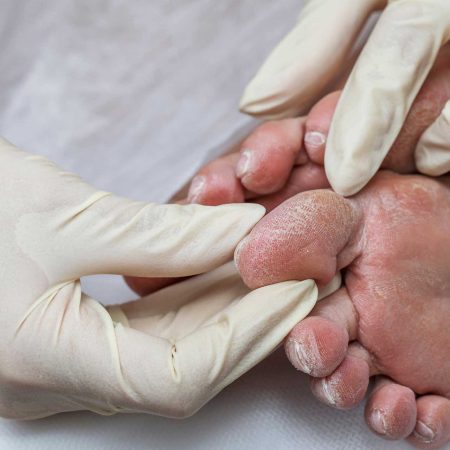Diabetic Foot Care
Diabetes, a condition affecting millions globally, poses a significant risk not only to overall health but also to the integrity of your feet. Diabetic foot care and health is a paramount concern, given its susceptibility to severe complications if neglected. At East Gosford Podiatry, we recognise the critical intersection between diabetes and podiatric health, dedicating our practice to the prevention, early detection, and effective management of diabetic foot conditions.
The relationship between diabetes and foot health is intricate and consequential. Reduced blood flow and nerve damage, common in diabetes, elevate the risk of infections, ulcers, and in severe cases, necessitate amputation. This reality underscores the importance of specialised foot care for those living with diabetes. Our Central Coast podiatrists approach transcends mere treatment and assessments; we are committed to educating our patients on the essential practices for maintaining foot health, thereby enhancing their quality of life and mitigating the risk of grave outcomes.
Our objective with our education on diabetic foot care is unmistakable: to underscore the critical importance of podiatric care in managing diabetes and to show how, with expert intervention and patient involvement, we can profoundly influence the health and quality of life for those with diabetes. Join us as we tackle the challenges of diabetic foot health and the benefits of proper podiatry care, equipped with the expertise and commitment of East Gosford Podiatry.
Understanding the Crucial Link Between Diabetes and Foot Health
Diabetes significantly impacts various bodily functions, and the feet are no exception. This condition can lead to two major problems that affect the feet: nerve damage (neuropathy) and reduced blood flow. Nerve damage causes a loss of feeling in the feet, making it hard to notice wounds or injuries. Reduced blood flow can slow the healing process of any cuts or injuries, increasing the risk of infection or ulcers.
These issues make diabetic foot care not just beneficial but essential for preventing severe complications. Infections can escalate quickly, leading to ulcers and, in the worst cases, necessitating amputation. This stark reality places a spotlight on the necessity of vigilant foot care and regular check-ups to catch problems before they escalate.
At East Gosford Podiatry, we are acutely aware of the risks diabetes poses to foot health. Our clinic is committed to a proactive approach, emphasising the early detection of potential foot problems. Through regular examinations, we can identify issues before they become severe, providing treatments that can prevent the progression to more serious conditions.
Our focus extends beyond treatment to include comprehensive patient education on the importance of foot care in diabetes management. We believe that informed patients are better equipped to make decisions that promote their overall health and well-being. By understanding the critical link between diabetes and foot health, individuals can take proactive steps to minimise their risk of complications.
This understanding forms the foundation of our practice at East Gosford Podiatry. By combining expert care with a strong emphasis on patient education, we strive to make a meaningful difference in the lives of those with diabetes. Our goal is to empower each patient with the knowledge and resources necessary to maintain healthy feet, thereby enhancing their quality of life and preventing the serious consequences that can arise from neglected foot care.




